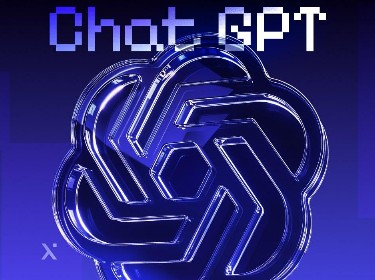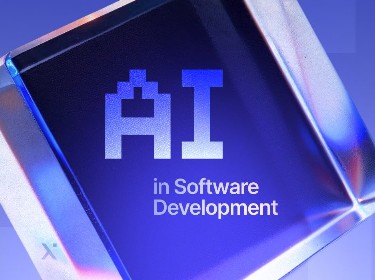In a world where we can order groceries and book a flight in seconds, waiting on the phone with your bank feels like a dinosaur era. Our patience for long queues is thinking day by day. Will AI chatbots help?
The solution for the long queues is simple and smart: the banking chatbot. It’s estimated that chatbots will handle up to 90% of a bank’s customer interactions in the near future, and financial institutions are projected to save over $1 trillion globally by 2030 through AI adoption. This is a seismic shift that the banking industry experiences these years.
Here at PixelPlex, we’re passionate about the technologies that are shaping this new FinTech reality. With extensive experience in banking software development and AI development services, we’ve seen how artificial intelligence boosts workflows, cuts operational costs and automates administrative work from the 1st day of integration.
We’ve put together this guide to explore the world of chatbots in banking. We’ll discuss what to expect in the future, current market state, tips and tricks for a faster and smoother AI adoption in your financial institution. Get comfortable, and let’s dive in.
How AI has evolved to AI chatbots
![]()
Since the beginning of the 20th century scientists have been obsessed with the idea of robots and humans coexistence. A talking machine? Wow. Early concepts start back in the 1950s with Alan Turing’s “Turing Test,” a kick off point for a machine’s ability to exhibit intelligent behavior indistinguishable from that of a human. The first true chatbot, ELIZA, emerged in the 1960s. It was a simple program that could recognize keywords and respond with scripted answers, creating a surprisingly human-like, albeit limited, conversation.
Fast forward a few decades, and the banking industry began to experiment with automated customer service through Interactive Voice Response (IVR) systems. They’re still popular, you 100% have interacted with such – “Press 1 for account balance, press 2 for…”. They were often clunky, impersonal, and too complex for clients.
Since the invention of the internet, as customers moved their banking online, the demand for instant, digital support has rebirth. This opened the new chapter for the modern chatbot for banking technology. Today’s chatbots are capable of understanding natural language, learning from conversations, and providing personalized financial guidance.
Chatbot types
When we talk about a chatbot for banks, it’s important to understand that they come in a few different kinds.
Scripted chatbots
They operate on a set of pre-defined rules and “if/then” logic. If you ask a question they have been programmed to answer, they will give you a pretty clear and accurate response. They are relatively simple and quick to build, making them a good starting point for banks looking to automate basic queries. However, if you stray from the script with an unexpected question, they’ll likely get confused and respond with a variation of “I’m sorry, I don’t understand.” Great for simple, repetitive queries but lack the flexibility to handle complex conversations.
AI-powered chatbots
These chatbots use technologies like Natural Language Processing (NLP) and Machine Learning (ML) to understand the intent behind your words, not just the keywords themselves. They can handle a much wider range of queries, learn from past interactions, and even understand slang and typos. An AI chatbot for banks can provide a truly personalized and human-like conversation, making them a powerful tool for customer engagement. They get smarter over time, continually refining their responses based on new data.
Hybrid chatbots
A hybrid model combines the best of both worlds. It uses a rule-based foundation for handling common, straightforward questions while leveraging AI capabilities to manage more complex and nuanced conversations. This approach provides a safety net of predictable responses but also offers the flexibility and learning capacity of AI. For many banks, the hybrid model represents the sweet spot between control and intelligence.
| Scripted chatbots | AI-powered chatbots | Hybrid chatbots | |
| Technology | Rule-based programming, if/then logic | Natural Language Processing (NLP), Machine Learning (ML) | Combination of rule-based and AI technologies |
| Strengths | Simple, quick to build, precise for defined queries | Handles a wide range of queries, learns over time, understands slang/typos | Combines predictability of scripted with flexibility of AI |
| Weaknesses | Inflexible, gets confused by unexpected questions | More complex and resource-intensive to build and maintain | Can be more complex to set up and manage than scripted bots |
| Best for | Simple, repetitive queries | Personalized, human-like conversations | Balancing predictability with intelligence for a wide range of needs |
Trends and statistics in banking AI chatbot market
The adoption of AI chatbots in banking is a strategic move with staggering financial backing and proven returns. The numbers paint a very clear picture:
- Market growth: The AI in finance market is on a meteoric rise, projected to grow from $712.4 million to an astounding $12.3 billion by 2032. This reflects a massive industry-wide shift towards AI-driven solutions.
- Cost savings: The potential for savings is a primary driver. By 2030, banks could save $1 trillion globally through AI adoption. Chatbots are expected to automate up to 90% of a bank’s customer interaction, drastically reducing operational costs.
- Customer satisfaction: It’s not just about the bottom line. A remarkable 46% of financial firms have reported better customer satisfaction after integrating AI. Happy customers are loyal customers, after all.
- Efficiency: AI-powered tools can process transactions up to 90% faster than traditional methods. This frees up human agents to focus on high-value tasks, boosting overall productivity by an estimated 30-50%.
These figures represent a fundamental transformation in how financial institutions operate and interact with their clients.
Chatbots in Healthcare: Unburdening The Specialists
AI Business Ideas: Worth Implementing!
AI in Transportation: How to Boost Your Workload
10 most popular use cases for AI chatbots in banking
![]()
The real magic of an AI banking chatbot is made up of its practical use and the amount of tasks it is able to offload from the shoulders of a human banking assistant. Building these sophisticated capabilities often starts with expert ML consulting to map out a clear strategy, then the company checks the potential ROI.
Let’s look at 10 real-world use cases that show what a modern chatbot is truly capable of.
24/7 qualified and automated assistance
This is the chatbot’s most basic and the most important functionality. It’s 11 PM and you suddenly wonder, “What’s my account balance?” Instead of waiting until morning, you just ask the bot. It can handle a massive range of questions instantly, from “How do I report a lost card?” to “What are your current mortgage rates?” This immediate support cuts down call volumes and frees up human agents for the tasks which can’t be resolved without the human intervention.
For banks seeking to implement such solutions, partnering with a ChatGPT integration company can help tailor conversational AI to their specific systems and compliance needs.
Personal financial advising
AI chatbot can look at your spending habits and say, “Hey, it looks like you’ve spent more on coffee this month. Want to set a budget for that?” It can categorize your expenses, spot opportunities to save, and even automate transfers to your savings account, giving you a nudge toward better financial health. Even though we have specialized budgeting applications since long ago, a chatbot might be more convenient to interact with, which comes in handy for senior people, for example.
Fraud prevention and security awareness
By learning your normal transaction patterns, a chatbot can spot anything that looks fishy, for example, a large withdrawal at an odd hour or a purchase in a city you’ve never been to. It’ll then send you an instant alert, asking, “Was this you?” This proactive approach could potentially save a user from fraud.
Onboarding processes
Sometimes opening a new bank account or applying for a loan can be a bit difficult to manage without assistance. A chatbot can walk you through the process step-by-step in a simple conversation. It can help you fill out forms, tell you what documents to upload, and even pre-qualify you for products. This way, the whole experience is faster and easier.
Personalized recommendations of products
By analyzing your financial data an AI banking chatbot can make personal recommendations. It might notice you have a child heading to college and suggest a specific savings account, or see that you travel frequently and recommend a credit card with no foreign transaction fees. This level of insight is made possible by sophisticated data analytics services.
Instant card and account management
Lost your wallet? Instead of panicking, you can just tell your banking bot, “Freeze my debit card.” A few seconds later, it’s done. Chatbots can handle a whole host of card-related tasks on the spot, like requesting a new PIN, reporting a card as stolen, or asking for a temporary credit limit increase.
Bank appointments setting
Need to talk to a human mortgage advisor or a wealth manager? You can simply ask the chatbot to schedule an appointment for you. It can check the advisor’s availability and book a slot that works for your calendar, sending you a confirmation and a reminder.
Financial literacy coach/ terms breaker
Banking terms can be too difficult to understand for some people, for example, seniors. A chatbot can break down complex topics into simple explanations. You could ask, “What is an APR?” or “How does a fixed-rate mortgage work?” and get a clear, easy-to-understand answer. Such an application really helps users to make smarter financial decisions and understand how to benefit from the modern banking system.
Collecting client feedback
Good businesses listen to their customers. A chatbot can proactively and politely ask for your feedback right after you’ve used a service or completed a transaction. A simple, “How was your experience today?” can gather insights that help the bank improve its services for everyone.
Coordination of finances while traveling
Informing your bank that you’re traveling abroad used to mean a phone call. Now, you can just let your chatbot know. A quick message like, “I’ll be in Spain from August 20th to the 27th,” is all it takes to ensure your card isn’t flagged for suspicious activity while you’re enjoying your vacation.
How to Implement AI-Based Recommendation System Step-by-Step
What Is Big Data Analytics in Banking? Key Applications and Benefits
Crypto Wallets Get Brain: How AI Crypto Wallet Development is Creating a Smarter and Safer Financial Future
Real-world examples of banking chatbots over the world
![]()
Let’s move from the theoretical to the practical and look at some of the pioneering chatbots that are already making a huge impact in the banking world.
Erica from Bank of America
Launched in 2018, Erica is arguably one of the most well-known virtual financial assistants. It has handled over 2 billion user interactions, helping customers with everything from balance inquiries and bill payments to providing personalized spending analysis and money-saving tips. Erica’s proactive insights have made it an indispensable tool for millions.
Eno from Capital One
Eno acts as a conversational AI assistant specifically for Capital One credit card holders. It can be accessed via text message or the mobile app. Eno helps users track their spending, check for recurring charges, and even generates virtual card numbers for secure online shopping, demonstrating a strong focus on security and convenience.
Ceba from Commonwealth Bank of Australia
Ceba is a virtual banking assistant that can handle over 200 common banking tasks. It can tell you your account balance, activate a new card, or help you dispute a transaction. Ceba is a prime example of a chatbot designed to streamline everyday banking and reduce the burden on call centers.
Amy from HSBC
Initially designed to assist with customer queries in Hong Kong, Amy is a chatbot focused on answering frequently asked questions about the bank’s products and services. Its success in providing quick, accurate information has led to its adoption in other regions.
Ally Assist from Ally Bank
Ally Assist is a voice-activated assistant integrated within the bank’s mobile app. It uses natural language processing to understand spoken commands, allowing users to make payments, transfer funds, and analyze their spending habits with simple voice prompts, making banking more accessible than ever.
Nomi from Royal Bank of Canada
Nomi is a chatbot that provides personalized insights into a customer’s spending habits. It can identify trends, like an increase in spending on takeout, and proactively offer budgeting advice. Nomi’s focus is on financial wellness, helping customers make smarter financial decisions.
Data Analytics in Insurance: Insights Into Benefits and Use Cases →
How an AI banking chatbot works
Building a smart banking AI chatbot often starts with a smart strategy, like launching with an MVP development approach to test and refine the core features before a full-scale rollout.
What’s the secret sauce? Let’s first understand how these bots even work.
The thinking process
Here’s a simplified breakdown:
- First, the user asks: You send a message, like “transfer $50 to my savings.”
- The bot listens using Natural Language Understanding: It uses a technology called NLU to decipher your message. It identifies your intent (what you want to do: transfer money) and the entities (the important details: $50, savings account).
- The bot builds up a dialogue: It takes the intent and entities and decides what to do next. Does it have all the information it needs? If not, it might ask a clarifying question.
- The bot acts using backend APIs and integrated services: Once it has all the info, the bot securely connects to the bank’s core systems through APIs. This is the crucial step where it actually checks your balance, initiates the transfer, or pulls your transaction history.
- The bot replies using Natural Language Generation: Finally, the bot uses NLG to craft a response in plain, human-like language. Instead of spitting out raw data, it says something friendly and clear, like, “All done! I’ve transferred $50 to your savings account.”
| Function | How it works |
| Natural Language Understanding (NLU) | Deciphers the user’s intent and extracts key details. |
| Dialogue management | Directs the conversation flow and determines the next action. |
| Backend APIs | Securely connects to bank systems to perform actions. |
| Natural Language Generation (NLG) | Crafts a human-like response for the user. |
Features of a good AI banking bot
Now that we know how it works, let’s look at the essential features.
Human handoff
The absolute worst experience is getting stuck with a chatbot that constantly replies “I don’t understand.” A great chatbot knows when to quit and can seamlessly pass the conversation to a human agent.
Omnichannel presence
We live our lives across multiple devices, and your chatbot should too. An omnichannel bot offers a consistent, connected experience whether a customer is on your website, using the mobile app, or even messaging through a platform like WhatsApp. They can start a conversation on their laptop and pick it up later on their phone.
Security
When you’re dealing with financial information, trust is everything. A top-tier banking bot must be built on a foundation of robust security, including end-to-end encryption to protect data in transit, strong authentication to verify user identity, and full compliance with financial regulations like PCI DSS and GDPR.
Convenient third-party integrations
Deep integration with core banking systems via APIs is what allows a bot to perform meaningful actions like paying bills, checking balances, and transferring funds. It’s the difference between a bot that can tell you about your account and one that can help you manage it.
Personality
A banking bot doesn’t need to tell jokes, but it shouldn’t sound like a cold, unfeeling robot either. Defining a clear and consistent personality makes the interaction feel more natural and engaging.
Scalable architecture
As more customers start using the bot, the system needs to handle the increased load without slowing down. Building the chatbot on a scalable infrastructure, often as a cloud-based solution, is key. This is a core principle for any successful SaaS development company, ensuring the service remains fast and reliable as it grows.
How much does it cost to build a banking AI chatbot?
The final price tag is a cocktail of several key ingredients: complexity, features, and, importantly, where in the world your development team is located.
Let’s break down the main cost drivers.
Complexity
This is the single biggest factor influencing the cost. Chatbots aren’t one-size-fits-all. They fall into a few general tiers:
The simple FAQ bot: It’s great for taking pressure off your customer service team but doesn’t connect to user accounts or handle complex queries.
Ballpark cost: $15,000 – $30,000
The intermediate bot: It might use some basic AI to understand language more flexibly and can integrate with a few of your systems (like a CRM) to pull simple information. It can handle more nuanced conversations but still can’t perform complex banking transactions.
Ballpark cost: $30,000 – $70,000
The advanced AI assistant: A chatbot that understands natural language deeply, integrates securely with your core banking systems, performs transactions, offers personalized advice, and learns from every interaction.
Ballpark cost: $70,000 – $200,000+
Features & integrations
Do you want voice recognition capabilities? That’s an extra cost. Need it to integrate with your legacy core banking platform, your new CRM, and your mortgage application software? Each of those integrations requires significant development and testing hours, pushing the price up.
Location
The geographic factor A developer’s time is the primary currency of any software project, and hourly rates vary wildly across the globe. This is where the difference between the US and the EU becomes very clear.
- In the United States: You’re looking at a premium market. A top-tier AI development team in the US will generally have hourly rates ranging from $100 to $250 per hour.
- In the European Union: Rates in Western and Northern Europe are also competitive, but often slightly more accessible. You can typically find excellent talent with rates from €70 to €180 per hour (roughly $75 to $195).
Let’s imagine a project that takes 500 hours. In the US, that could cost between $50,000 and $125,000 in labor alone. In the EU, the same project might cost between €35,000 and €90,000. This geographic difference can have a massive impact on the final budget.
| Factor | Description | Cost range |
| Complexity | ||
| Simple FAQ bot | Answers basic questions and reduces customer service workload | $15,000 – $30,000 |
| Intermediate bot | Uses basic AI to understand language and integrates with a few systems | $30,000 – $70,000 |
| Advanced AI assistant | Understands natural language, performs transactions, and provides personalized advice | $70,000 – $200,000+ |
| Features & integrations | Additional functionalities like voice recognition and integration with existing systems (e.g., CRM, core banking platform) | Each added feature or integration increases the total cost |
| Location | ||
| United States | High-end market with premium hourly rates | $100 – $250 per hour |
| European Union | Competitive, slightly more accessible rates | €70 – €180 per hour (approx. $75 – $195) |
One final, crucial point: launching the chatbot isn’t the end of your spending. Like any sophisticated software, it needs ongoing maintenance, hosting, security updates, and monitoring. And since we’re talking about an AI, it needs to keep learning. A portion of your budget should always be set aside for continuous improvement and training the AI model to ensure it gets smarter and more helpful over time.
Challenges and future trends
![]()
Despite the immense potential, implementing a banking chatbot isn’t without its hurdles. A thorough security audit and risk management process is essential before deployment.
Looking to the future, the world of chatbots in banking is set to get even more exciting. Here are a few trends to watch:
Hyper-personalization
Chatbots will move beyond generic advice to offer truly individualized financial guidance based on a user’s life goals, risk tolerance, and real-time financial data.
Voice and emotional AI
The rise of voice-activated assistants will continue, and chatbots will begin to incorporate emotional AI to better understand customer sentiment and tailor their responses accordingly.
Predictive and proactive engagement
Future chatbots will anticipate your needs. For example, a chatbot might notice a recurring monthly payment to a subscription service and ask if you’d like to find a better deal.
AI copilots for employees
The development of sophisticated AI assistants is also on the rise. Many banks are looking into AI copilot development services to create internal tools that augment the capabilities of their human agents, providing them with real-time information and support.
How to Perform a Cybersecurity Risk Assessment: A Step-By-Step Guide
The Intelligent Bank: Moving Beyond Automation to Strategic AI
To wrap it up
The evidence is clear: the benefits of AI in banking are too significant to ignore. A well-designed banking chatbot can transform your customer service, reduce operational costs, and provide a truly personalized banking experience.
At PixelPlex, our team of experts is dedicated to helping businesses like yours navigate the complexities of digital transformation for ambitious financial institutions. If you’re ready to explore the possibilities of AI and build a chatbot for banking that will delight your customers, we’re here to help.
We hope this article has been an insightful and comprehensive guide to the powerful and exciting world of chatbots in banking. We know the future of finance is conversational, but we’re here for you to assist in building it – just drop us a line.
FAQ
A chatbot can handle up to 90% of basic customer questions, tell the user his account balance, freeze the stolen car, set an in-bank appointment, etc. This saves your company money, frees up your team, and makes customers happy with instant 24/7 support.
Costs vary. From $15,000 for a simple FAQ bot to over $200,000 for an advanced one. It really depends on how smart you want the bot to be and what features you need.
For most banks, a hybrid chatbot is the best choice. It can handle simple questions with pre-written answers, and for more complex issues, it uses AI to understand and respond smartly.
First and foremost, your bot needs to be secure and able to seamlessly hand off a conversation to a human agent when a customer needs more help. Also, building an omnichannel bot lets customers start a conversation on one device and pick it up on another.
The best first step is to find a development partner with experience in both AI and finance. Look for a team that prioritizes security and can help you build a bot that truly serves your customers’ needs. Or just message us and we’ll kick off!




